Winter training can be a road cyclist’s toughest challenge. The biting cold, shorter daylight hours, and slippery roads can make maintaining your training regimen feel like an uphill battle.
Yet, it’s precisely during these winter months that you can lay the groundwork for a successful cycling season ahead.
In this comprehensive guide, we will explore the 9 most common winter training mistakes, and, more importantly, we’ll equip you with practical strategies to steer clear of them.
By the time spring arrives, you’ll be ready to hit the road with renewed strength, stamina, and confidence.
Mistake 1: Neglecting Strength Training

Strength training is often the unsung hero of a cyclist’s regimen. However, underestimating its importance during the winter months is a critical error that can hinder your progress as a cyclist.
Strength exercises like squats, lunges, and deadlifts may seem like they belong more in a weightlifting gym than on a cyclist’s to-do list. Still, in reality, they are potent tools in your quest for cycling excellence.
These exercises target key muscle groups, such as your quadriceps, hamstrings, and glutes, all of which play pivotal roles in generating pedal power and maintaining proper form while in the saddle.
When you neglect strength training, you miss out on the opportunity to develop the muscular foundation required to conquer steep ascents and burst past competitors during sprints.
It’s important to note that incorporating strength training can lead to muscle soreness, especially when you first start. This soreness is a natural response as your muscles adapt and grow stronger.
The winter months are the ideal time to address this because there are typically no races or competitions on the horizon. This means you can focus on building strength and managing muscle soreness without the pressure of peak performance.
To avoid the mistake of neglecting strength training, consider working with a fitness coach who specializes in cycling-specific strength programs. They can guide you through exercises and routines that align with your cycling goals and help you manage muscle soreness effectively.
By dedicating time to strength training during the winter, you’ll lay a solid foundation for improved cycling performance when the racing season returns, ultimately propelling you toward your cycling aspirations.
Mistake 2: Overtraining

The desire to emerge from the winter season stronger and fitter for the upcoming racing season is a common aspiration among road cyclists. However, this enthusiasm can inadvertently lead to a significant issue: overtraining.
Overtraining occurs when you chronically stress your body without allowing it adequate time to adapt and recover. It’s a trap many cyclists fall into, driven by the well-intentioned goal of pushing their limits.
As you strive to reach new heights in your performance, it’s crucial to recognize that overtraining is a real threat, one that can hinder your progress rather than propel you forward.
Delving deeper into this, understand that your body needs time to adapt to the training stress you’re subjecting it to. Muscles require recovery to grow stronger, and this adaptation process takes time.
To prevent overtraining, it’s essential to become attuned to your body’s signals. Listen to the subtle cues it provides. If you find yourself persistently fatigued, struggling to maintain your usual performance levels, or falling ill more frequently, these are red flags that you might be pushing too hard.
To optimize recovery during the off-season, prioritize sleep. Aim for at least 7-8 hours of quality sleep per night.
Remember the importance of a well-structured training plan. It should strike a balance between exertion and recovery. Incorporate rest days into your training schedule, allowing your body the necessary respite to repair and rebuild.
Embrace the importance of active recovery, which involves engaging in low-intensity activities like easy spins or gentle stretching on your rest days. Furthermore, vary the intensity of your workouts, ensuring that you have a mix of easy, moderate, and hard sessions.
Mistake 3: Focusing Solely on Endurance
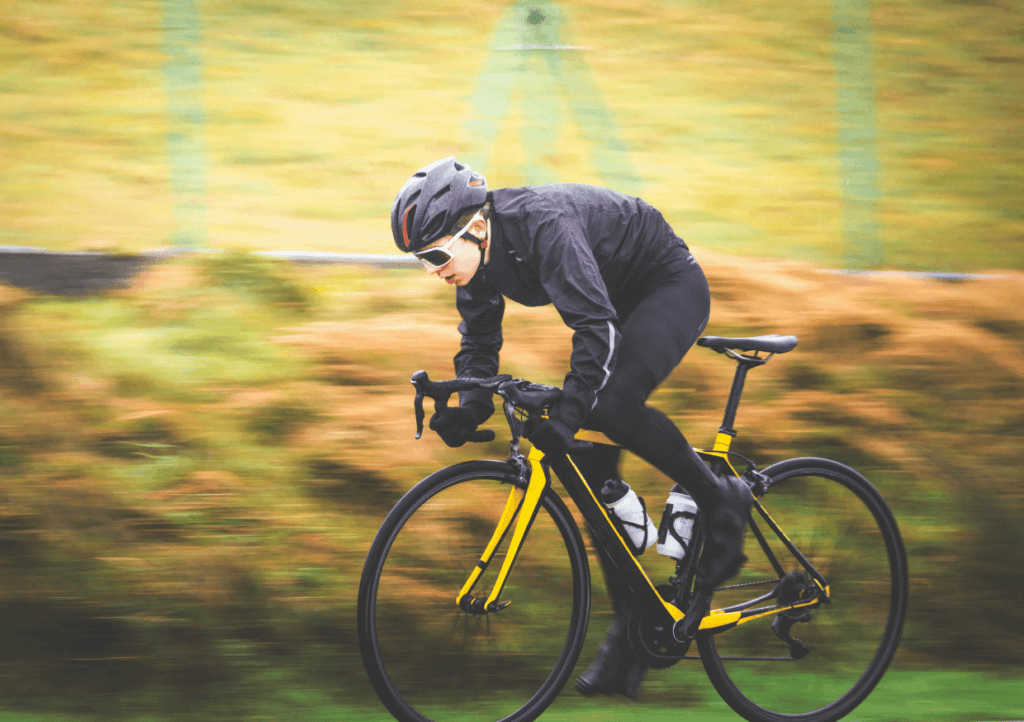
While building endurance is undoubtedly a cornerstone of road cycling, fixating solely on this aspect during the winter months may inadvertently limit your overall potential. However, there’s a game-changing strategy that can supercharge your winter training: introducing interval training into your regimen.
Interval training is a dynamic approach that involves alternating between short bursts of high-intensity efforts and periods of active recovery. By pushing your heart rate to higher levels during intense intervals, you stimulate adaptations that improve your overall aerobic capacity.
This translates into a stronger cardiovascular system, enabling you to tackle longer and more demanding rides with greater ease.
Yet, the advantages of interval training extend beyond cardiovascular benefits. They encompass the enhancement of your power and speed – two attributes that can set you apart in competitive cycling or simply make your recreational rides more exhilarating.
These short, intense bursts of effort replicate the demands of real-world cycling scenarios, be it surging ahead to catch a breakaway or sprinting to the finish line.
To incorporate intervals effectively, consider starting with shorter efforts, such as 30 seconds to 1 minute. Gradually extend the duration of your intervals as your fitness progresses.
It’s essential to maintain proper form and focus on delivering consistent effort during each interval. This consistency ensures that you’re maximizing the training stimulus and reaping the full rewards of interval training.
Incorporating intervals into your winter training not only breaks the monotony of long, steady rides but also prepares you for the diverse challenges that await in the upcoming cycling season. So, don’t let the cold weather limit your progress; embrace interval training as a potent tool to elevate your cycling prowess.
Mistake 4: Poor Nutrition Choices

Winter training can be derailed by bad nutrition choices. It’s essential to recognize that your body’s nutritional needs change during the colder months, and adapting your diet accordingly can significantly impact your performance and overall health.
In winter, it’s perfectly acceptable to allow for a slight increase in body fat. This extra fat can serve as a buffer, bolstering your immune system and providing a reserve to draw from when you intensify endurance miles in the spring and rebuild muscle in the gym.
To avoid the mistake of neglecting your body’s changing nutritional needs, consider these key principles:
1. Maintain a Balanced Diet: Your winter training diet should include carbohydrates, protein, and healthy fats. Carbohydrates provide energy for cold-weather rides, while protein supports muscle repair and growth. Healthy fats, like those found in nuts and avocados, are essential for overall energy and body functions.
2. Stay Hydrated: Hydration remains crucial even in the cold. Cold weather can mask thirst signals, potentially leading to dehydration. Proper hydration helps regulate temperature and nutrient transport to muscles. Consciously drink water before, during, and after rides.
3. Beware of Overconsumption and Junk Food: While it’s important to get enough calories to fuel your training, overconsumption or indulging in too much junk food can lead to an increase in fat and an unfavorable change in body composition.
Be mindful of your calorie intake and prioritize nutrient-dense foods. Focus on whole grains, lean proteins, and plenty of fruits and vegetables to meet your energy needs without compromising your health or performance.
Mistake 5: Inadequate Bike Maintenance
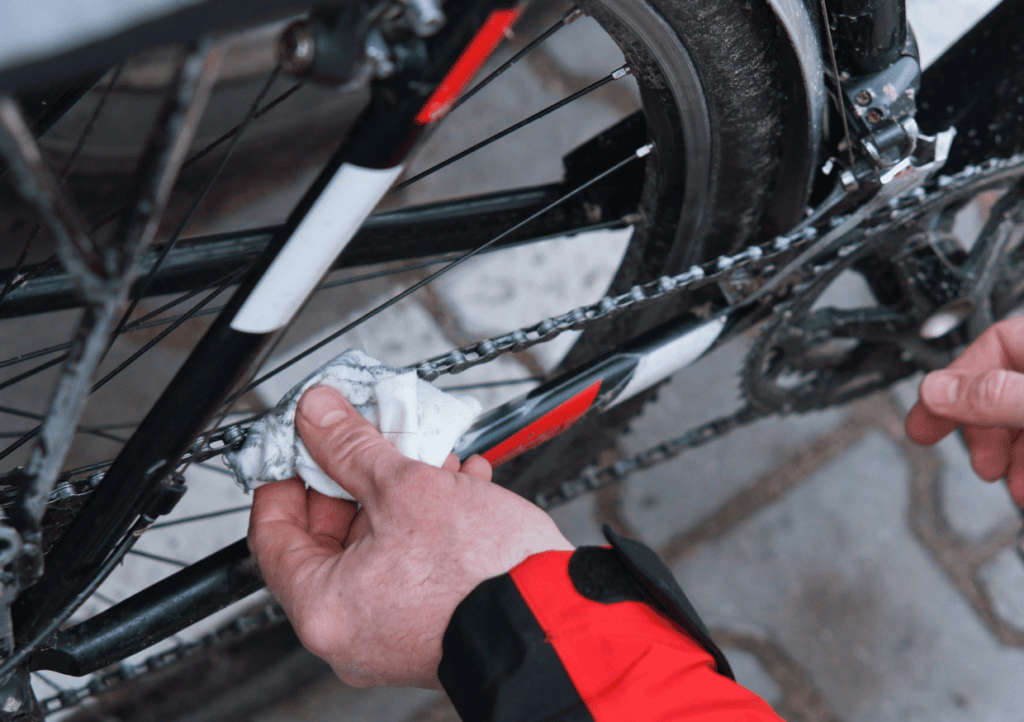
Your bike is your trusty companion on the road, and it deserves some tender loving care during the winter months. Neglecting bike maintenance can lead to avoidable breakdowns, frustrating ride interruptions, and costly repairs that could have been prevented.
To ensure your bike remains reliable throughout the winter season, integrate bike maintenance as a regular part of your routine. Begin by cleaning your bike thoroughly after each ride to remove corrosive road grime, salt, and other contaminants.
Pay close attention to the drivetrain, frame, and wheels. Dry it meticulously to prevent moisture-related issues.
Regularly apply a high-quality lubricant to your chain and other moving parts to prevent rust and ensure smooth operation. Wipe off excess lubricant to prevent attracting dirt and grime.
Tire maintenance is crucial. Check tire pressure before every ride and inspect tread wear. Adequate pressure ensures optimal grip on slippery winter roads.
Inspect your drivetrain for signs of wear on the chain, cassette, and chainrings. Replace worn components promptly to prevent further damage.
Consider a professional bike tune-up at the start of the winter season. It allows a mechanic to address hidden issues. By caring for your bike during the winter, you preserve its longevity and ensure a safer, more enjoyable riding experience.
Mistake 6: Ignoring Flexibility and Mobility

Neglecting flexibility and mobility is a common error that can significantly impede your winter cycling performance. In the cold months, muscles have a tendency to tighten up, leading to discomfort and reduced cycling efficiency.
To remedy this, it’s crucial to incorporate stretching routines into your training plan. Pay special attention to key muscle groups central to cycling, including the quadriceps, hamstrings, hip flexors, and lower back.
Prior to your rides, engage in dynamic stretches to prepare your muscles for action. These stretches enhance blood flow, alleviate stiffness, and ensure your body is primed for the physical demands of cycling.
Post-workout, deepen your flexibility efforts with static stretches. Holding each stretch for 15-30 seconds gradually increases your range of motion, facilitating a smoother pedal stroke and a more comfortable riding position.
Consider augmenting your flexibility and mobility practices with foam rolling sessions. Foam rolling is an effective self-myofascial release technique that targets tight spots and releases muscular tension.
It’s especially beneficial for the legs and lower back, areas prone to cycling-induced strain. Utilizing a foam roller can pinpoint and alleviate knots and adhesions within your muscles, enhancing your comfort and performance.
By integrating these flexibility and mobility strategies into your winter training routine, you’ll not only elevate your cycling performance but also reduce the risk of injury and discomfort associated with tight muscles.
Remember, a supple body is a valuable asset in conquering winter training challenges and preparing for the upcoming cycling season.
Mistake 7: Not Having the Right Kit
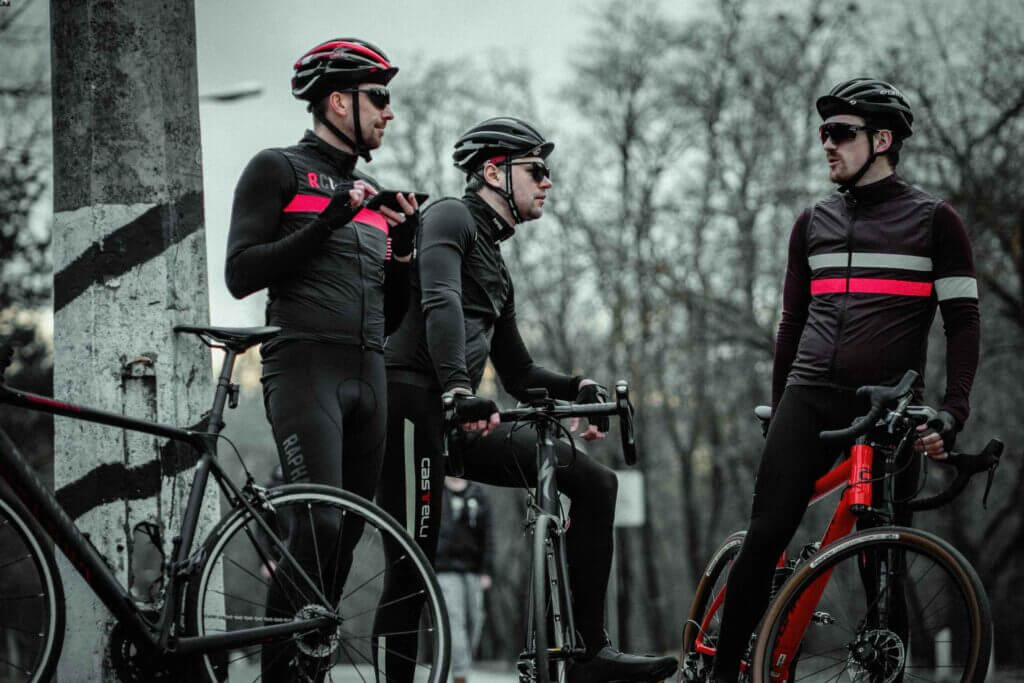
Winter training demands the right gear and clothing to ensure comfort, performance, and safety. Inadequate attire can lead to discomfort, hinder your cycling performance, and even pose health risks.
To avoid this mistake, invest in quality winter cycling gear. Begin with a thermal jersey or base layer to keep your core warm.
Layering is crucial; add a windproof and water-resistant jacket to shield against the elements. Insulated gloves and shoe covers are essential to maintain warmth in your extremities.
Don’t forget thermal tights or leg warmers to protect your legs from the cold. Quality winter cycling shoes can make a significant difference in comfort and performance.
Visibility is paramount during darker winter months. Consider adding reflective elements to your clothing and bike. Bright, visible lights on the front and back of your bike are essential for safety.
Having the right winter kit ensures you stay warm, dry, and visible during training. Quality gear not only enhances your comfort but also maximizes your performance and safety. With the right kit, you can focus on riding your bike and hitting your winer training targets.
Mistake 8: Inconsistent Training
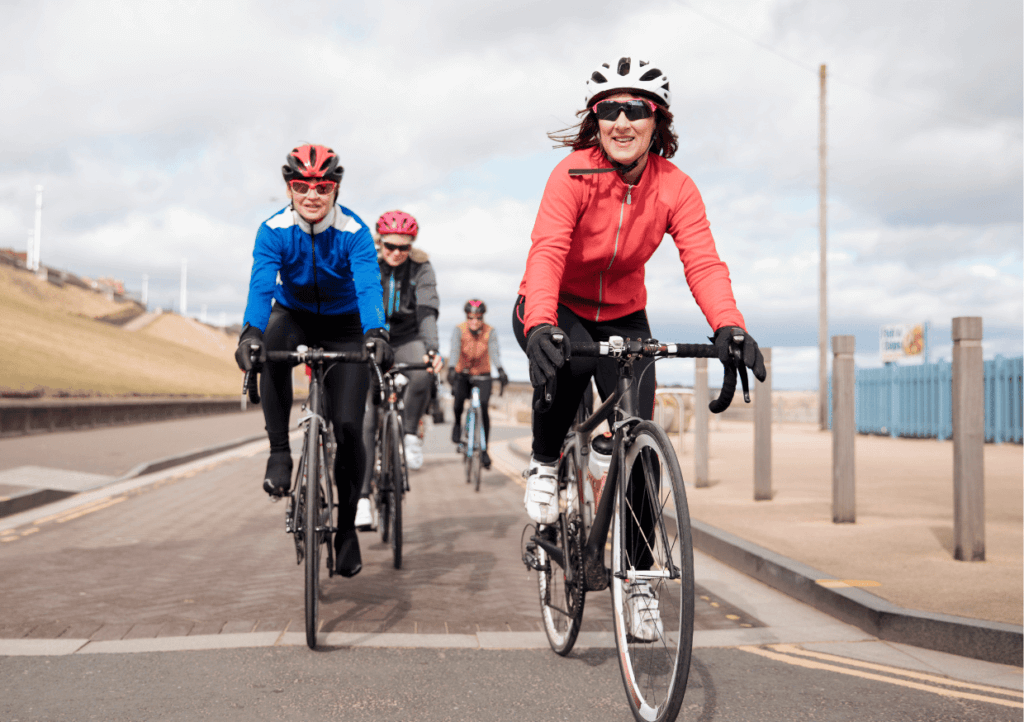
Consistency is the cornerstone of any successful training program, even during the winter. However, life often throws obstacles like illness, family commitments, or work demands into the mix, threatening to disrupt your training routine. It’s important to remember that a missed training session here or there isn’t the end of the world.
To maintain consistency, start by creating a well-structured training schedule that acknowledges these potential hurdles. Set achievable goals that align with your long-term objectives, but be flexible enough to adapt when life intervenes.
Illness can be a significant roadblock, so it’s crucial to listen to your body and prioritize rest when needed. Overtraining while under the weather can lead to setbacks.
Family and work commitments can also pose challenges. Balancing these responsibilities with your training can be a juggling act. Try to find windows of time for your workouts that don’t conflict with your family or work obligations.
Consider incorporating cross-training during the winter, as activities like running, swimming, or even high-intensity interval training (HIIT) can provide an efficient workout in less time.
Consider finding a training partner or joining a group. The camaraderie and accountability can be powerful motivators, especially on those cold, dark mornings when the temptation to stay in bed is strong. Having someone to share the journey with can help you stay on track, even when life tries to throw you off course.
In the end, maintaining consistency in your winter training requires not just dedication but also adaptability.
Mistake 9: Over Reliance on Indoor Turbo Trainers
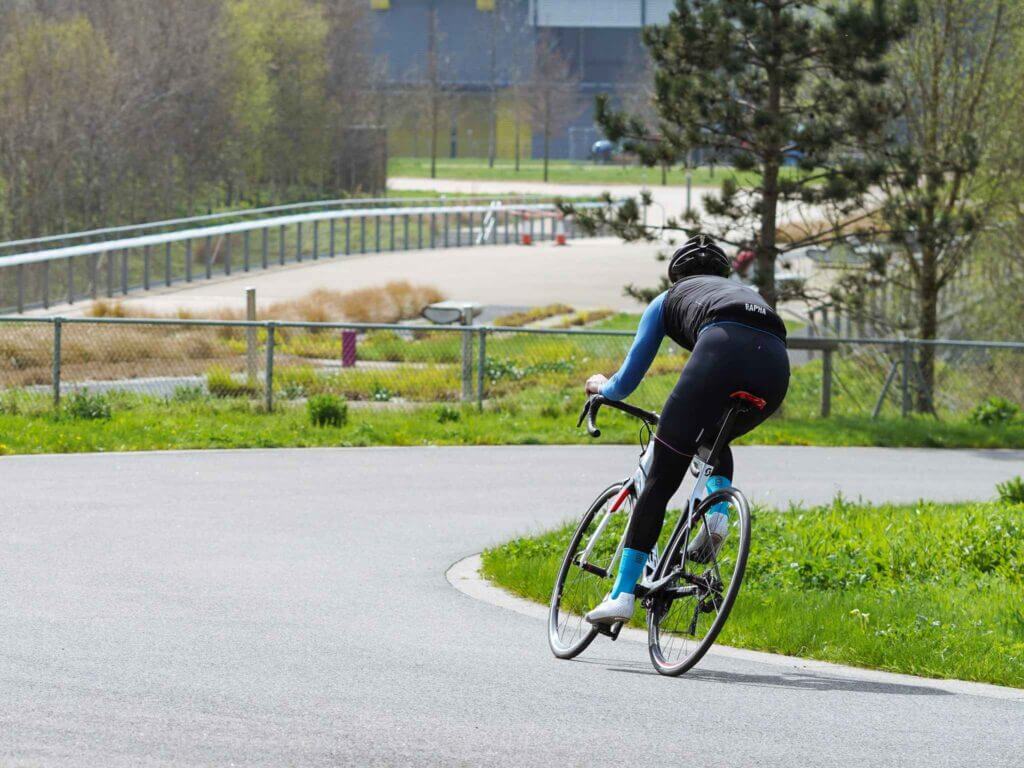
While indoor turbo trainers have their place in winter training, spending too much time pedaling away in the comfort of your home can hinder your overall cycling development. It’s essential to understand that indoor training doesn’t replicate the real-world cycling experience.
Indoor training lacks the dynamic elements of outdoor riding, such as navigating corners, descending steep hills, and cycling in a group. These skills are crucial for road cyclists, and neglecting them can leave you ill-prepared for the challenges of outdoor riding.
Additionally, indoor training often encourages a static riding position, which can limit your ability to maintain an aerodynamic posture and adapt to changing wind conditions. In contrast, outdoor riding exposes you to various environmental factors, enhancing your adaptability and honing your cycling skills.
To avoid this mistake, strike a balance between indoor and outdoor training. Use indoor sessions for structured workouts and maintaining fitness, but don’t forget the benefits of real-world experience.
Even during the winter, make an effort to get outside on the bike regularly. It will help you maintain essential skills, stay connected with the cycling community, and keep your training fresh and engaging. Remember, cycling is an outdoor sport, and embracing the elements is part of the adventure.

